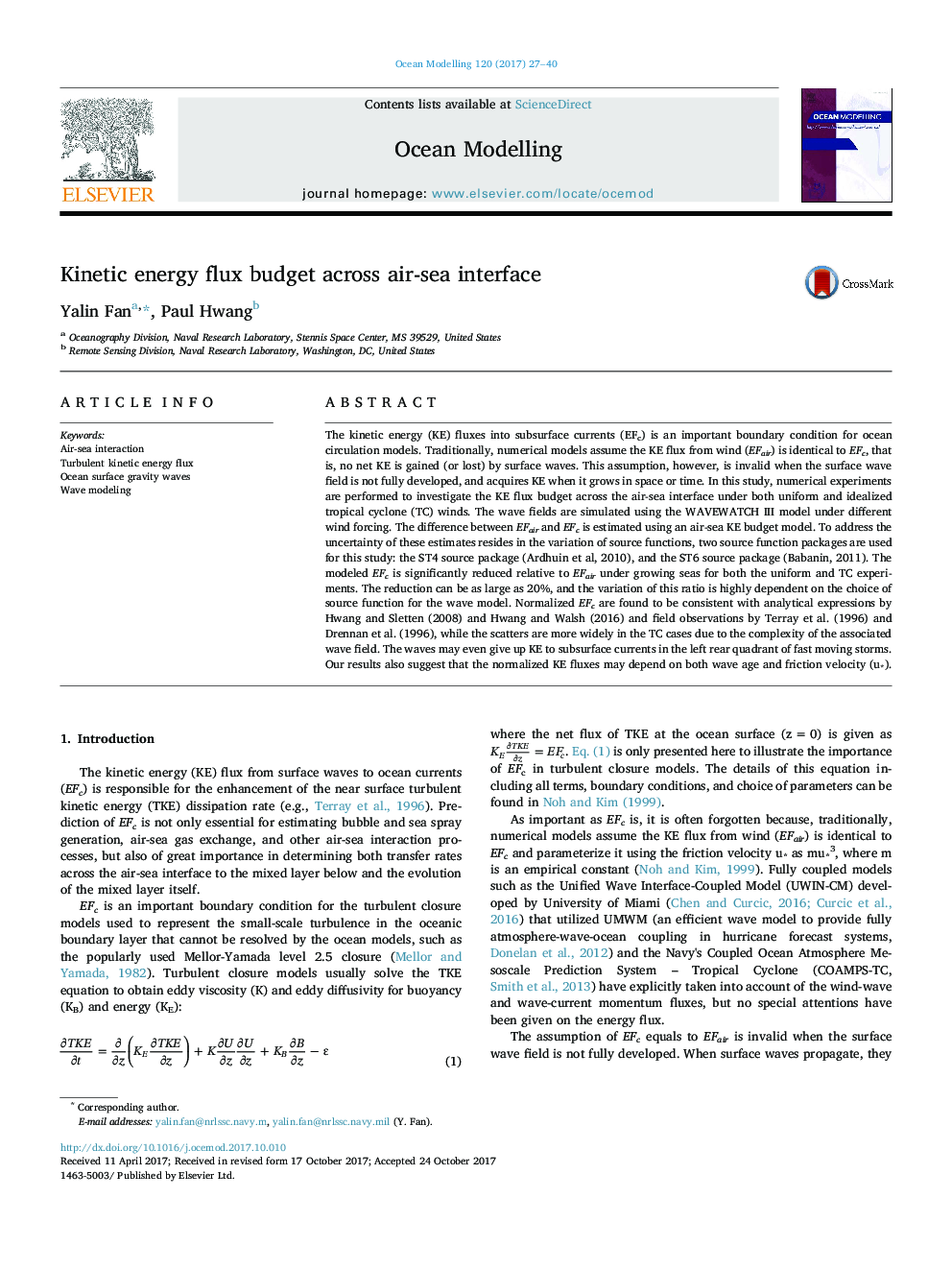| کد مقاله | کد نشریه | سال انتشار | مقاله انگلیسی | نسخه تمام متن |
|---|---|---|---|---|
| 8886553 | 1627729 | 2017 | 14 صفحه PDF | دانلود رایگان |
عنوان انگلیسی مقاله ISI
Kinetic energy flux budget across air-sea interface
ترجمه فارسی عنوان
بودجه انرژی شبیه سازی انرژی در سراسر دریای هوا و دریا
دانلود مقاله + سفارش ترجمه
دانلود مقاله ISI انگلیسی
رایگان برای ایرانیان
کلمات کلیدی
تعامل هوا و دریا، جریان انرژی جنبشی آشفته، امواج گرانشی سطح اقیانوس، مدل سازی موج،
موضوعات مرتبط
مهندسی و علوم پایه
علوم زمین و سیارات
علم هواشناسی
چکیده انگلیسی
The kinetic energy (KE) fluxes into subsurface currents (EFc) is an important boundary condition for ocean circulation models. Traditionally, numerical models assume the KE flux from wind (EFair) is identical to EFc, that is, no net KE is gained (or lost) by surface waves. This assumption, however, is invalid when the surface wave field is not fully developed, and acquires KE when it grows in space or time. In this study, numerical experiments are performed to investigate the KE flux budget across the air-sea interface under both uniform and idealized tropical cyclone (TC) winds. The wave fields are simulated using the WAVEWATCH III model under different wind forcing. The difference between EFair and EFc is estimated using an air-sea KE budget model. To address the uncertainty of these estimates resides in the variation of source functions, two source function packages are used for this study: the ST4 source package (Ardhuin et al, 2010), and the ST6 source package (Babanin, 2011). The modeled EFc is significantly reduced relative to EFair under growing seas for both the uniform and TC experiments. The reduction can be as large as 20%, and the variation of this ratio is highly dependent on the choice of source function for the wave model. Normalized EFc are found to be consistent with analytical expressions by Hwang and Sletten (2008) and Hwang and Walsh (2016) and field observations by Terray et al. (1996) and Drennan et al. (1996), while the scatters are more widely in the TC cases due to the complexity of the associated wave field. The waves may even give up KE to subsurface currents in the left rear quadrant of fast moving storms. Our results also suggest that the normalized KE fluxes may depend on both wave age and friction velocity (u*).
ناشر
Database: Elsevier - ScienceDirect (ساینس دایرکت)
Journal: Ocean Modelling - Volume 120, December 2017, Pages 27-40
Journal: Ocean Modelling - Volume 120, December 2017, Pages 27-40
نویسندگان
Yalin Fan, Paul Hwang,
